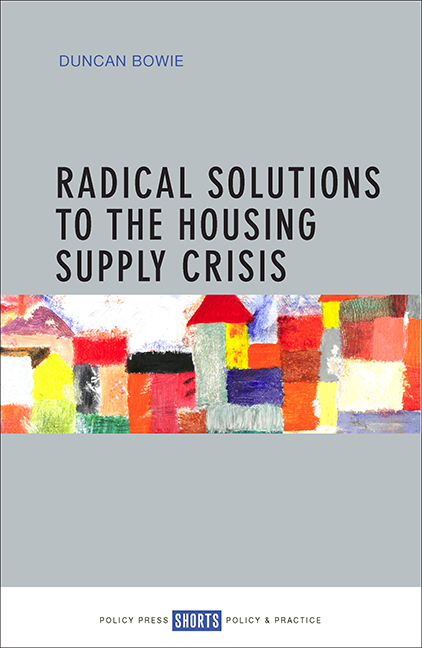7 - The inefficient use of the existing stock
Published online by Cambridge University Press: 05 April 2022
Summary
Although new housing supply has fallen short on estimates of housing requirements, over the last decade, the total housing stock has increased by 7%, roughly parallel to the increase in the overall population of the UK. Yet, this increase in overall housing supply has failed to reduce the overall shortage of homes and has certainly not led to any reduction in house prices or made homes more affordable. The government's assumption that increasing supply would ease the housing crisis has proved false. Chapter Six considered the extent to which there has been a mismatch of new housing supply and the housing needs of the population. This chapter focuses on the extent to which the fact that neither the existing stock nor new housing supply are utilised effectively has contributed to the current situation. This is sometimes referred to as the ‘distributionalist’ argument and was the focus of Dorling's (2014) book All that is solid.
The total housing stock of England is currently estimated at 23.3 million dwellings. It is estimated that in 2015/16, 140,000 new homes were built, an increase on the previous year's figure of 125,000. We are therefore adding to the stock of housing at a rate of about 0.5% to 0.6% per annum. Replacing the existing stock at this rate would take 165–185 years, even if no provision was made for the growth in the household population. A total of 4.6 million homes were built before 1919 and are therefore nearly 100 years old; a further 3.9 million were built in the interwar period and are therefore more than 70 years old; only 3.5 million homes – or 15% of the stock – is less than 25 years old (EHS, 2013.4: Table 2.1 (DCLG, 2015)).
Less than 10% of property purchases relate to new properties. How we use the existing stock is therefore more critical in terms of effective use of supply and in the determination of rents and prices than how many new homes are built. We are, in fact, using the existing stock far less effectively than we have done in the past.
One issue that gets considerable attention is the number of homes that are empty. The most recent government figures estimate that there are 203,000 vacant homes in England – or about 9% of the total stock – down significantly from the 2004 figure of 319,000 (CLG live table 615 (DCLG, 2016a)).
- Type
- Chapter
- Information
- Radical Solutions to the Housing Supply Crisis , pp. 99 - 104Publisher: Bristol University PressPrint publication year: 2017



